Splash Screen
Chapter Introduction
Section 1: Civilization Begins in
Mesopotamia
Section 2: Egyptian Civilization
Section 3: New Centers of
Civilization
Section 4: The Rise of New Empires
Visual Summary
Chapter Menu
During the 1960s, Egypt built the Aswan High Dam to control flooding of the Nile River. The lake rising behind the dam threatened to destroy ancient Egyptian monuments. An international team saved several temples including Abu Simbel—Ramses II’s temple. Abu Simbel was carved into 20-ton blocks, moved 200 feet, and reassembled. In this chapter you will learn about Egyptian rulers and temples.
• Why would other countries help Egypt preserve its monuments?
• How can countries adapt to changing needs and still preserve their history?
Chapter Intro
How does progress affect history?
Chapter Intro
Chapter Intro
Civilization Begins in Mesopotamia
Why were the first farming societies located along rivers?
Chapter Intro 1
Egyptian Civilization
What factors contribute to a stable and lasting civilization?
Chapter Intro 2
New Centers of Civilization
How did the monotheism of the Israelites differ from religious beliefs of previous cultures?
Chapter Intro 3
The Rise of New Empires
What did lasting empires have in common?
Chapter Intro 4
Chapter Preview-End
The BIG Idea
Physical Geography Fertile soil between the Tigris and Euphrates Rivers allowed an early civilization to flourish in Mesopotamia.
Section 1-Main Idea
• polytheistic
• cuneiform
• city-state
• empire
• ziggurat
• patriarchal
•
theocracy
Content Vocabulary
•
transport
innovations
Section 1-Key Terms
Academic Vocabulary •
• Tigris River
• Uruk
• Euphrates
• Akkadians
River
• Sargon
• Mesopotamia
• Babylon
• Fertile
• Hammurabi
Crescent
• Sumerians
Section 1-Key Terms
People and Places
Do you agree that geography plays an important role in the development of societies?
A. Agree
B. Disagree
A. A B. B
0%
0%
Section 1-Polling Question
Geography and Religion
The physical environment of Mesopotamia supported the development of civilization and influenced people’s religious beliefs.
Section 1
Geography and Religion (cont.)
• The first civilization began in a valley known as Mesopotamia, which was between the Tigris and Euphrates Rivers.
• Mesopotamia (today’s Iraq) was located in the Fertile Crescent, an area of good farmland located between the Mediterranean Sea and the Persian Gulf.
Ancient Mesopotamia
Section 1
Geography and Religion (cont.)
• The Sumerians created the first civilization
in Mesopotamia around 3000 B.C.
• Mesopotamians were polytheistic, and
Section 1
believed in nearly 3,000 gods and goddesses.
What enabled the Mesopotamians to switch from a nomadic lifestyle to permanent settlements?
A. Polytheism
B. Civilizations
C. Large armies
0%
0%
D. Farming
Section 1
A. A B. B C. C 0% 0% D. D
City-States of Ancient Mesopotamia
Religion played a powerful role in the economic, political, and social structure of Mesopotamian city-states.
Section 1
City-States of Ancient Mesopotamia (cont.)
• Sumerian cities, such as Eridu, Uruk, and
Ur, gained political and economic control of Mesopotamia.
• The basic units of Sumerian society were
Section 1
independent city-states.
City-States of Ancient Mesopotamia (cont.)
• Much of the wealth of the cities was
dedicated to building temples dedicated to the god or goddess of the city. These temples were often built atop a massive stepped tower called a ziggurat.
Section 1
• Priests and priestesses held a great deal of power, making the state a theocracy, a government by divine authority.
City-States of Ancient Mesopotamia (cont.)
• Farming was the basis of the economy of the
Sumerian city-states.
• Sumerian metalworkers used copper, gold,
and silver to make tools and jewelry.
Section 1
• Sumerians discovered how to make bronze by adding tin to copper. Bronze is a hard metal used for making tools and weapons.
City-States of Ancient Mesopotamia (cont.)
• The invention of the wheel in 3000 B.C. made
the transport of goods much easier.
• Sumerian society was divided into three
major social groups: nobles, commoners, and slaves.
Mesopotamia Trade Route
Section 1
Which of the following most accurately describes a theocracy?
A. A government by divine authority
B. A society of farmers
C. A society with different social
classes
0%
0%
0%
0%
D. A government where the king
Section 1
is the ruler A. A B. B C. C D. D
The Creativity of the Sumerians
The Sumerians invented writing and several new technologies that made life easier.
Section 1
The Creativity of the Sumerians (cont.)
• The Sumerians are credited with many
technological innovations that affect our lives today.
Section 1
• Around 3000 B.C., the Sumerians created a system of writing known as cuneiform (“wedge-shaped”). People used a stylus or other tool to make wedge-shaped impressions on clay tablets, which were then baked or dried in the sun.
The Creativity of the Sumerians (cont.)
• Writing was important because it allowed
Section 1
Mesopotamian peoples to keep records and to communicate ideas with others.
The Creativity of the Sumerians (cont.)
• Examples of Sumerian technology and
innovation:
− Wagon wheel − Potter’s wheel − Sundial − Arch used in construction − Bronze metalwork − Advances in mathematics, geometry, and
Section 1
astronomy
Which of the following was not an example of Sumerian technology?
A. Bronze weapons
B. Wagon wheels
C. Ceramic pottery
0%
0%
D. Use of geometry to erect buildings
Section 1
A. A B. B C. C 0% 0% D. D
Empires in Ancient Mesopotamia
Strong leaders established empires and codified the laws of Mesopotamia.
Section 1
Empires in Ancient Mesopotamia (cont.)
• Around 2340 B.C., the Akkadians, a people
north of the Sumerian city-states, took control of the Sumerian city-states and established the first empire in world history.
• The leader of the Akkadian Empire was
Section 1
Sargon.
Empires in Ancient Mesopotamia (cont.)
• In 1792 B.C., the city-state of Babylon took
control of Sumer and Akkad. The Babylonian ruler was Hammurabi.
• The Code of Hammurabi was a collection of written laws based on a system of strict justice.
The Influence of Hammurabi
Section 1
Empires in Ancient Mesopotamia (cont.)
• The Code of Hammurabi covered:
− Criminal offenses
− Duties of public officials
− Consumer protection laws
− Marriage and family
• Mesopotamian society was patriarchal—
Section 1
men dominated society.
Which of the following set up the first empire in world history?
A. Babylon
B. Hammurabi
C. Cuneiform
D. Akkadia
0%
0%
Section 1
A. A B. B C. C 0% 0% D. D
Section 1-End
The BIG Idea
Order and Security Continuity and stability were characteristics of Egyptian civilization for thousands of years.
Section 2-Main Idea
• dynasty
• mummification
• pharaoh
• hieroglyphics
• bureaucracy
• hieratic script
Content Vocabulary
• vizier Academic Vocabulary
• major
• physical
•
identifying
Section 2-Key Terms
• Nile River
• Hatshepsut
• Lower Egypt
• Akhenaten
• Upper Egypt
• Tutankhamen
• Menes
• Ramses II
• Giza
• Cleopatra VII
• Hyksos
Section 2-Key Terms
People and Places
Is religion an essential component for empires?
A. Yes
B. No
A. A B. B
0%
0%
Section 2-Polling Question
Geography and Religion
The Nile River was fundamental to the development of Egyptian civilization.
Section 2
Geography and Religion (cont.)
• The Nile River is the longest river in the
world. It begins in central Africa and empties into the Mediterranean Sea to the north.
• The Nile River splits into two major
branches:
− Lower Egypt is the delta area that flows into
the Mediterranean Sea.
Section 2
− Upper Egypt is the land to the south which is upstream from the Mediterranean Sea.
Geography and Religion (cont.)
• Egypt’s important cities developed at the tip of the delta, where the Nile River divides.
• Regular flooding from the Nile River created an area of rich farm soil. Farmers in the Nile Valley grew a surplus of crops, making Egypt very prosperous.
The Geography of Ancient Egypt
Section 2
Geography and Religion (cont.)
• The Nile River was the fastest way to travel
through the kingdom, making both transportation and communication easier.
• Natural barriers protected Egypt from
invasion.
The Geography of Ancient Egypt
Section 2
Geography and Religion (cont.)
• The Egyptians were polytheistic.
• source of life
• Re is one of the Sun God’s names.
− Sun Gods:
• Osiris brought civilization to Egypt and was a symbol of resurrection. By identifying with Osiris, Egyptians hoped to gain life after death.
Section 2
− River and Land Gods:
Which of the following enabled farmers to grow crops in the Nile Valley?
A. The use of slaves
B. Annual flooding of the
Nile River
C. New farming equipment
0%
0%
Section 2
D. Egyptian gods A. A B. B C. C 0% 0% D. D
Egyptian Kingdoms
Egyptian history is divided into three major periods, called kingdoms.
Section 2
Egyptian Kingdoms (cont.)
• Around 3100 B.C., King Menes united Upper and Lower Egypt into a single kingdom and created the first royal dynasty.
• Scholars divide Egyptian history into three
Section 2
periods: the Old Kingdom, the Middle Kingdom, and the New Kingdom.
Egyptian Kingdoms (cont.)
• The Old Kingdom (2700 B.C.–2200 B.C.)
− Egyptian monarchs called pharaohs ruled
Egypt with absolute power.
− A government bureaucracy developed
during this period.
− The vizier was in charge of the government administration.
Section 2
− Pyramids were built to honor the dead.
Egyptian Kingdoms (cont.)
• Egyptians practiced mummification to
preserve the physical body. It was believed that preserving the physical body would allow the person’s spirit to return.
• Pyramids were tombs for the mummified
Section 2
bodies of pharaohs, as well as symbols of royal power. The largest pyramid was built for King Khufu at Giza.
Egyptian Kingdoms (cont.)
• The Middle Kingdom (2055 B.C.–1650 B.C.)
− A golden age of stability and expansion
into Africa and western Asia.
− Pharaohs built public works and provided
for the public welfare of the people.
− The Middle Kingdom ended with an
Section 2
invasion of the Hyksos from western Asia around 1650 B.C.
Egyptian Kingdoms (cont.)
• The New Kingdom (1550 B.C.–1070 B.C.)
− Hatshepsut was one of the first women to
become pharaoh.
− Akhenaten closed the temples of all other gods except for Aten, god of the sun disk.
− The popular boy-pharaoh Tutankhamen
Section 2
restored the old gods.
Egyptian Kingdoms (cont.)
− Ramses II restored the old borders of the
empire that had been lost during the religious revolution under Akhenaten.
− Cleopatra VII unsuccessfully fought for
Section 2
Egyptian independence in the first century B.C.
Which is true of the Old Kingdom, the Middle Kingdom, and the New Kingdom?
A. They all featured women rulers.
B. They featured long-term stability
and strong leadership.
0%
0%
0%
0%
C. A pyramid was built for each period.
D. The kingdoms all had the same
Section 2
ruling family. A. A B. B C. C D. D
Life in Ancient Egypt
Egyptian Society was organized into classes.
Section 2
Life in Ancient Egypt (cont.)
• Egyptian society was highly structured and
“pyramid” shaped.
− Pharaoh
− Upper class: priests, nobles, government
officials
− Middle class: merchants, artisans, scribes,
tax collectors
Section 2
− Lower class: peasants, farmers
Which of the following professions would not have come from the middle class?
A. Scribe
B. Tax collector
C. Farmer
D. Merchant
0%
0%
Section 2
A. A B. B C. C 0% 0% D. D
Egyptian Accomplishments
Egyptians developed complex writing and made advances in the arts and sciences.
Section 2
Egyptian Accomplishments (cont.)
• Hieroglyphics, or “sacred writings,”
appeared around 3000 B.C. and were carved into stone.
Section 2
• Hieratic script was a simplified version of writing used for business transactions and record keeping. It was written on papyrus.
Egyptian Accomplishments (cont.)
• Advances in Egyptian Art and Science
− Architecture: pyramids, monuments, and
temples
− Mathematics and Geometry
− A 365-day calendar
− Human anatomy: embalming, treating
Section 2
wounds and disease
How did the Egyptians keep records of daily activities?
A. Carvings in stone
B. Writings on papyrus
C. Beads kept in a jar
D. Etches on wax tablets
0%
0%
Section 2
A. A B. B C. C 0% 0% D. D
Section 2-End
The BIG Idea
Ideas, Beliefs, and Values The Israelites’ belief in one God resulted in a distinct society.
Section 3-Main Idea
• pastoral nomad
• monotheistic
Content Vocabulary
•
• created
technology
• domesticated
Section 3-Key Terms
Academic Vocabulary
•
Indo-Europeans
• Hittites
• Phoenicians
•
Israelites
• King Solomon
• Jerusalem
Section 3-Key Terms
People and Places
Do you think residents of your community are suspicious of strangers?
A. Yes
B. No
A. A B. B
0%
0%
Section 3-Polling Question
The Role of Nomadic People
Nomadic peoples, especially the Indo- Europeans, served an important function for civilized societies by spreading goods and new technology.
Section 3
The Role of Nomadic People (cont.)
• In central Asia, pastoral nomads lived on the fringes of civilization. These people depended on hunting, gathering, herding, and sometimes farming for survival.
• These people domesticated animals for
Section 3
food and clothing.
The Role of Nomadic People (cont.)
• People in settled communities and nomads
traded goods and technology.
• The nomadic peoples sometimes overran
Section 3
civilizations and created their own empires.
The Role of Nomadic People (cont.)
• The Indo-Europeans were one of the most
important nomadic peoples.
− Originated in the steppe region north of the
Black Sea
− Spoke Greek, Latin, Persian, Sanskrit, and
the Germanic languages
Section 3
− Moved to India, western Asia, and Europe
The Role of Nomadic People (cont.)
• Hittites (1600 B.C.–1200 B.C.) created an
empire in western Asia and were the first to use iron.
The Hittite Empire, 1650–1200 B.C.
Section 3
Who were the first Indo-Europeans to use iron?
A. Greeks
B. Syrians
C. Hittites
D. Pastoral nomads
0%
0%
Section 3
A. A B. B C. C 0% 0% D. D
The Phoenicians
The Phoenicians created an international trade empire and invented an alphabet.
Section 3
The Phoenicians (cont.)
• After the fall of the Egyptian and Hittite
empires, many city-states and kingdoms emerged.
• The Phoenicians lived on the Mediterranean
coast in Palestine. They built ships and became great international sea traders. They sailed to Britain, Spain, and the west coast of Africa.
Phoenicia and its Colonies, 1000 B.C.–700 B.C.
Section 3
The Phoenicians (cont.)
• The Phoenicians are best known for their alphabet. It was copied by the Greeks and the Romans.
Hebrew, Phoenician, and Latin Alphabets
Section 3
What was the most significant cultural invention of the Phoenicians?
A. Their alphabet
B. Maps from their exploration
C. Glass
D. Dome-shaped temples
0%
0%
0%
0%
Section 3
A. A B. B C. C D. D
The Israelites
The Israelites had lasting influence through their religious beliefs rather than from military power.
Section 3
The Israelites (cont.)
• The Israelites lived south of the Phoenicians
and were a minor factor in politics.
• The Israelites were monotheistic and their
religion, Judaism, influenced Christianity and Islam.
Section 3
• Around 970 B.C., King Solomon established an empire in the land known today as Israel. The capital was Jerusalem.
The Israelites (cont.)
• After Solomon’s death in 930 B.C., the
Israelite empire was divided:
− The Kingdom of Israel was located in the north. The Assyrians conquered the ten northern tribes of the Kingdom of Israel in 721 B.C.
Section 3
− The Kingdom of Judah was to the south. The Chaldeans defeated the Assyrians and the two tribes of the Kingdom of Judah in 586 B.C.
The Israelites (cont.)
Section 3
• The religion of the Jews was unique among religions of Egypt and western Asia. Despite being conquered by other states, the Jewish people would not accept the gods of their conquerors.
Which aspect of Israelite culture had the greatest impact on Western civilization?
A. The use of iron
B. King Solomon’s wisdom
C. Trade routes
0%
0%
D. A monotheistic religion
Section 3
A. A B. B C. C 0% 0% D. D
Section 3-End
The BIG Idea
Competition Among Countries The Assyrians and the Persians established vast empires in the ancient world.
Section 4-Main Idea
• satrapy
• monarchy
• satrap
Content Vocabulary
•
restraint
• sustained
• sought
Section 4-Key Terms
Academic Vocabulary
• Assyrians
• Nebuchadnezzar
• Persians
• Cyrus
• Darius
• Royal Road
•
Immortals
• Zoroaster
Section 4-Key Terms
People and Places
Do you agree that it is more important to be able to conquer an enemy than it is to rule an empire?
A. Agree
B. Disagree
A. A B. B
0%
0%
Section 4-Polling Question
The Assyrian Empire
The Assyrians ruled with harsh tactics that brought about the fall of their empire.
Section 4
The Assyrian Empire (cont.)
• The Assyrians were a Semitic-speaking
people who established an empire in 700 B.C.
• Assyrians used iron weapons and a large, well-organized, and disciplined army to conquer others.
• A major factor in the army’s success was its
Section 4
ability to use different military tactics.
Which of the following is not a reason for the success of the Assyrian conquest of other nations?
A. Wealth from the captured
trade routes
B. The use of iron weapons
C. A large, disciplined army
0%
0%
0%
0%
D. The army could utilize different military tactics
A. A B. B C. C D. D
Section 4
The Persian Empire
Strong Persian leaders conquered and ruled a vast empire for more than 200 years.
Section 4
The Persian Empire (cont.)
• After the collapse of the Assyrian Empire,
Section 4
the Chaldean king Nebuchadnezzar II made Babylonia the leading power in western Asia. The capital of Babylonia was one of the greatest cities in the ancient world.
The Persian Empire (cont.)
• Babylonia was conquered by the Persians, an Indo-European people from today’s Iran. The nomadic Persians were unified under one ruling family with dynamic leaders.
The Persian Empire, 500 B.C.
Section 4
The Persian Empire (cont.)
• In 539 B.C., Cyrus captured Babylonia. He
was known as Cyrus “the Great” because of his wisdom and restraint toward his conquered foes.
Section 4
• Cyrus respected other civilizations and used Assyrian, Egyptian, and Babylonian designs for building his palaces.
The Persian Empire (cont.)
• Cambyses sought to extend the empire by
successfully invading Egypt.
• Darius added territory in western India and Thrace, today’s Greece. He divided the empire into provinces called satrapies.
Section 4
• Each satrapy was ruled by a satrap who collected taxes, provided justice, and recruited soldiers.
The Persian Empire (cont.)
• The Royal Road stretched across the
Persian kingdom and allowed for communication and travel. This communication and travel sustained the Persian Empire.
Section 4
• The power of the Persian Empire came from its military. Its professional soldiers were known as the Immortals because when one was killed, he was immediately replaced.
The Persian Empire (cont.)
• Persian religion was known as
Zoroastrianism. This monotheistic religion was started by the prophet Zoroaster, who wrote his teachings in the Zend Avesta.
• The Persian Empire was weakened by
Section 4
struggles over succession to the monarchy. The Empire finally fell to Alexander the Great and the Greeks in the 330s B.C.
What caused the Persian Empire to decline after the death of Darius?
A. The Royal Road fell into disrepair.
B. Succession of Darius was uncertain, causing internal struggles.
C. The rise of Zoroastrianism
divided people.
0%
0%
0%
0%
D. They were defeated in battle by
the Greeks.
A. A B. B C. C D. D
Section 4
Section 4-End
Ancient Environments
• The Egyptians received
fertile soil from the floodwaters of the Nile for farming.
• The Phoenicians set up a
trading empire and colonies on the Mediterranean.
• The Mesopotamians created irrigation and flood control systems.
VS 1
Ancient Religions
• The Mesopotamians and the Egyptians, who both were polytheistic, believed their rulers derived their power from the gods.
• The Israelites were monotheistic and believed
God communicated through prophets.
• The Persians followed Zoroastrianism, a monotheistic religion.
VS 2
Ancient Innovations
• The Mesopotamians
established a collection of laws, along with inventing the arch, dome, wheel, and a system of writing.
• The Phoenicians invented
the alphabet.
• The Persians created the
concept of a standing army.
VS 3
VS-End
Figure 1
Figure 1a
Figure 3
Figure 4
Figure 5
Figure 6
Figure 7
Figure 8
Figure 9
Chapter Transparencies Menu
Chapter Transparency
Unit Time Line Transparency
Select a transparency to view.
Chapter Trans Menu
Cause-and-Effect Transparency
Chapter Trans
Unit Timeline Trans
CnETrans
DFS Trans 1
DFS Trans 2
DFS Trans 3
DFS Trans 4
polytheistic
Vocab1
having many gods
city-state
Vocab2
a state with political and economic control over the surrounding countryside
ziggurat
Vocab3
a massive, stepped tower on which was built a temple dedicated to the chief god or goddess of a Sumerian city
theocracy
Vocab4
government by divine authority
cuneiform
Vocab5
“wedge-shaped,” a system of writing developed by the Sumerians using a reed stylus to create wedge-shaped impressions on a clay tablet
empire
Vocab6
a large political unit or state, usually under a single leader, that controls many peoples or territories
patriarchal
Vocab7
dominated by men
transport
Vocab8
the moving of goods or people
innovation
Vocab9
a new idea, method, or device
dynasty
Vocab10
a family of rulers whose right to rule is passed on within the family
pharaoh
Vocab11
the most common of the various titles for ancient Egyptian monarchs; the term originally meant “great house” or “palace”
bureaucracy
Vocab12
an administrative organization that relies on nonelective officials and regular procedures
vizier
Vocab13
a high government official in ancient Egypt or in Muslim countries
mummification
Vocab14
a process of slowly drying a dead body to prevent it from decaying
hieroglyphic
Vocab15
a picture or symbol used in a hieroglyphic system of writing
hieratic script
Vocab16
simplified version of hieroglyphics used in ancient Egypt for business transactions, record keeping, and the general needs of daily life
major
Vocab17
great; significant in size or importance
identifying
Vocab18
believing that one is the same or very similar to another
physical
Vocab19
relating to the body
pastoral nomad
Vocab20
a person who domesticates animals for food and clothing and moves along regular migratory routes to provide a steady source of nourishment for those animals
monotheistic
Vocab21
having one god
created
Vocab22
made or brought something new into
domesticated
Vocab23
adapted to life with and to the advantage of humans
technology
Vocab24
the science or study of the practical or industrial arts; applied sciences
satrapy
Vocab25
one of the 20 provinces into which Darius divided the Persian Empire
satrap
Vocab26
“protector of the Kingdom”; the governor of a province (satrapy) of the Persian Empire under Darius
monarchy
Vocab27
government by a sovereign ruler such as a king or queen
restraint
Vocab28
a controlling force
sought
Vocab29
made an attempt; tried
sustained
Vocab30
supported or held up
To use this Presentation Plus! product:
Click the Forward button to go to the next slide.
Click the Previous button to return to the previous slide.
Click the Home button to return to the Chapter Menu.
Click the Transparency button from the Chapter Menu, Chapter Introduction slides, or Visual Summary slides to access the transparencies that are relevant to this chapter. From within a section, click on this button to access the relevant Daily Focus Skills Transparency.
Click the Return button in a feature to return to the main presentation.
Click the History Online button to access online textbook features.
Click the Reference Atlas button to access the Interactive Reference Atlas.
Click the Exit button or press the Escape key [Esc] to end the slide show.
Click the Help button to access this screen.
Links to Presentation Plus! features such as Maps in Motion, Graphs in Motion, Charts in Motion, Concepts in Motion, and figures from your textbook are located at the bottom of relevant screens.
Help
This slide is intentionally blank.
End of Custom Shows



![Bài giảng Lịch sử thế giới trung đại [mới nhất]](https://cdn.tailieu.vn/images/document/thumbnail/2025/20250506/vinarutobi/135x160/4361746531976.jpg)
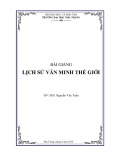
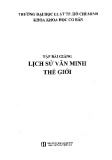

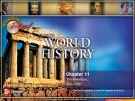
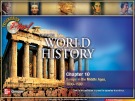
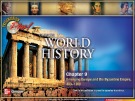
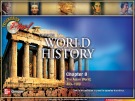
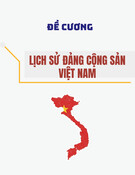
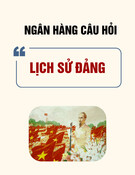







![Giáo trình Tổ chức và Quản lý Hoạt động Văn hóa Thông tin Cơ sở (Ngành Quản lý Văn hóa - Trung cấp) - Trường Trung cấp Mỹ thuật - Văn hóa Bình Dương [Mới nhất]](https://cdn.tailieu.vn/images/document/thumbnail/2025/20251110/kimphuong1001/135x160/17861762748492.jpg)





